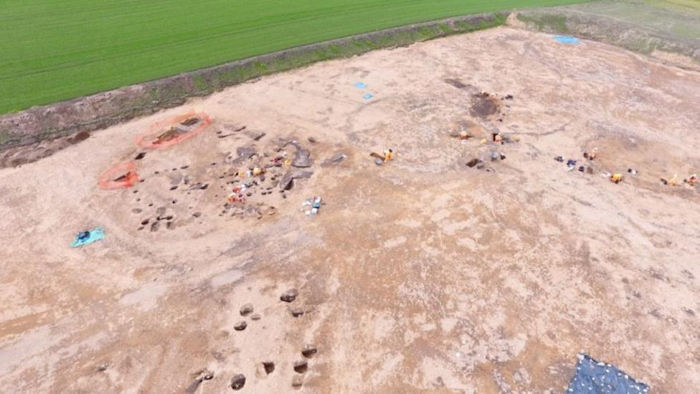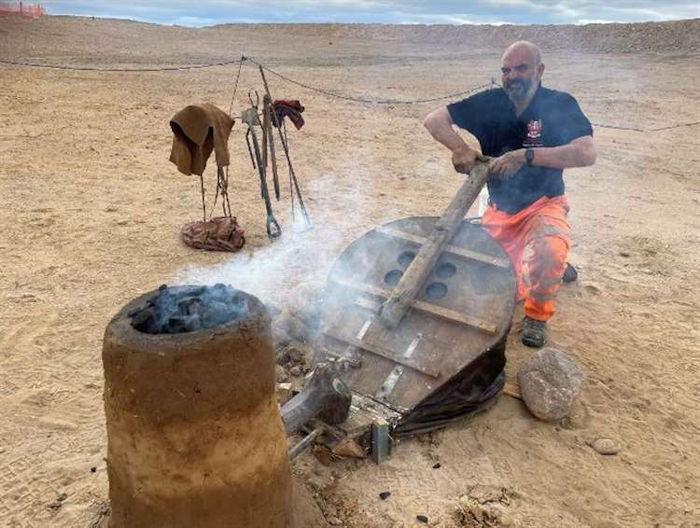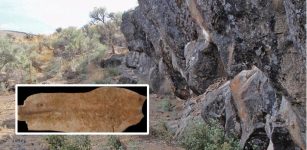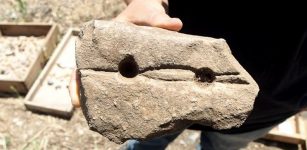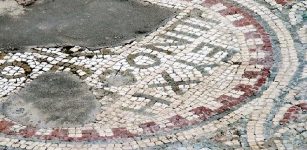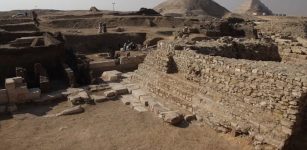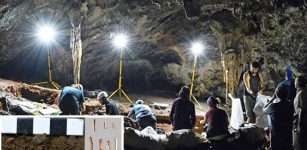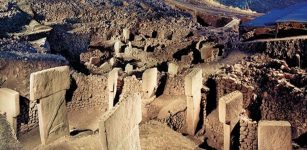Why Was The Iron Age Village Near Elgin In Scotland Suddenly Abandoned And Burned Down?
Conny Waters - AncientPages.com - During pre-quarrying investigations at Lochinver Quarry to the southwest of the town Elgin, on the south coast of the Moray Firth roughly midway between Inverness and Aberdeen in Scotland, scientists uncovered an Iron Age settlement. Archaeologists uncovered 35 buildings at the site with iron furnaces, storage pits, and timber enclosures.
Credit: ARS Ltd
Further investigations revealed that this "fascinating and unusual" site in Moray had been used to produce metal for up to 2,000 years from the Bronze Age through the Iron Age. Archaeologists think they could excavate as many as 40 iron smelting sites.
Before these discoveries, around 25 such sites had been found in Scotland.
Scientists could not understand why the Iron Age village of Elgin had suddenly been abandoned.
Researchers found evidence that homes and other structures had been burned down, but by whom and why?
Credit: ARS Ltd
Based on results from radiocarbon dating, scientists could determine that the settlement was hit by fire at around the same time as the battle of Mons Graupius in 83 A.D.
Scientists suggest this metal-working site in Moray may have aided arm Caledonian tribes against the Romans.
Archaeologists propose one possible explanation: the Iron Age settlement was burned down by Roman legionaries following their victory over Caledonians at the Battle of Mons Grapius around 83 AD.
An iron furnace built on site using the archaeological evidence can reach temperatures of about 1600 Centigrade. Credit: ARS Ltd
“This is a rare and important site which provides an exciting opportunity to further understanding of later prehistoric life, early metalworking and the impact of Rome in the far north of Britain,” Dr. Clive Waddington of Archaeological Research Services Ltd, the director of the site said.
BBC reports that Dr. Waddington added: "Something happens on this site that removes any further activity.
We have got these burnt timbers and abandoned pits for making charcoal. We have got pits with roasted ore - a valuable commodity - ready for smelting but just abandoned."
Two cauldrons have also been found buried, possibly by the Lochinver's residents, to hide the highly valued items.
Dr. Waddington said it was possible Lochinver was abandoned in the aftermath of Mons Grapius, which saw Roman troops and cavalry defeat 30,000 Caledonians.
Suggested locations of the battle include Dunning in Perthshire, Carpow in Fife, Bennachie in Aberdeenshire, and Culloden in the Highlands.
This iron cooking cauldron was found buried with a bronze cauldron inside it. Credit: ARS Ltd
Dr. Waddington said: "The battle was a big victory for the Romans and could explain why some sites were burned down, with Romans torching sites as they came through after the battle."
Archaeological Research Services Ltd and Aberdeenshire Council are investigating the site supported with funding from building materials company Tarmac.
See also: More Archaeology News
The work has been further supported by various universities, including radiocarbon dating at the University of Glasgow, specialist artifact conservation at the University of Durham, and expert knowledge from the National Museum of Scotland.
Written by Conny Waters - AncientPages.com Staff Writer


